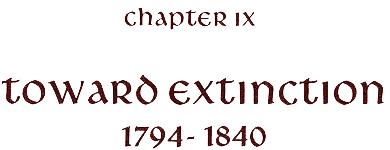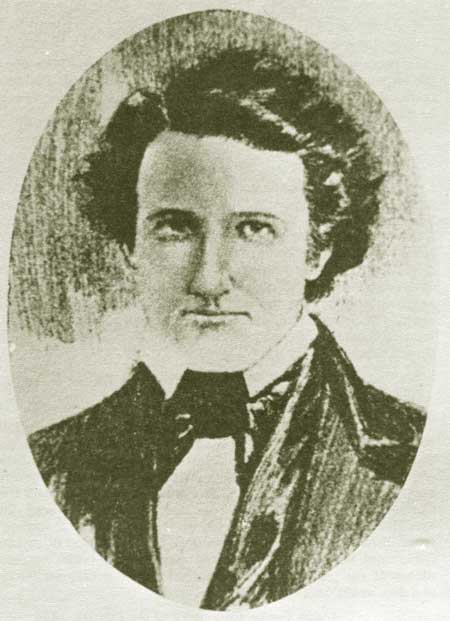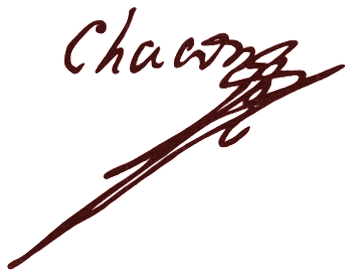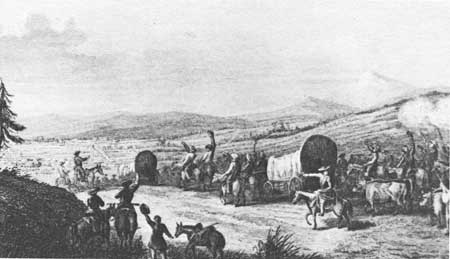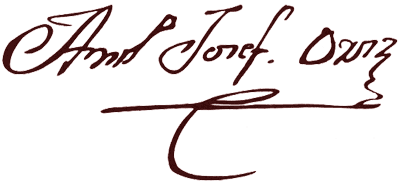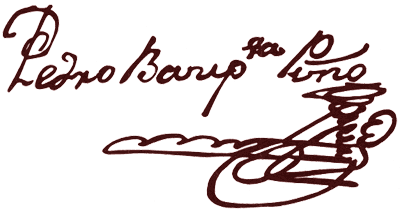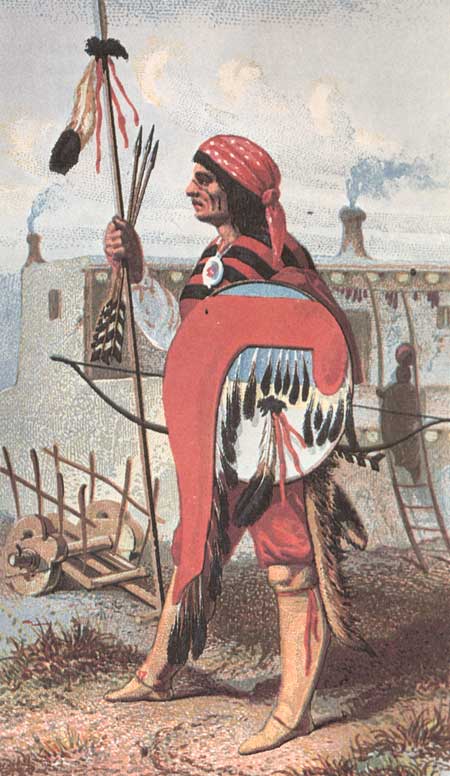

Contents Foreword Preface The Invaders 1540-1542 The New Mexico: Preliminaries to Conquest 1542-1595 Oñate's Disenchantment 1595-1617 The "Christianization" of Pecos 1617-1659 The Shadow of the Inquisition 1659-1680 Their Own Worst Enemies 1680-1704 Pecos and the Friars 1704-1794 Pecos, the Plains, and the Provincias Internas 1704-1794 Toward Extinction 1794-1840 Epilogue Abbreviations Notes Bibliography |
Dwindling Remnant If, as Josiah Gregg claimed, the last of the Pecos could be seen in the 1830s gazing off to the east, their thoughts were probably less bound up with the return of "Montezuma" than with the plains themselves, source of the wealth and the danger that once had made their pueblo the strongest of them all. Now as calicoes, hairpins, and hardware, the richest trade in the history of the plains, jolted by in the beds of Pittsburgh wagons, the Pecos had no part in it. They were too few now to be of any use—as converts to Christianity, as vassals or allies, as traders or carpenters. The priest came only when he had to, or not at all. The settlers in the valley encroached on the land of their fathers. Pecos was dying.
Settling San Miguel del Vado For the venerable pueblo at the eastern gateway, the turn of the century was a watershed. The New Mexico census of 1799 was the last to show Pecos with more Indians than non-Indians, 159 to 150. Five years before, in 1794, there had been no "españoles y castas" at all, no plaza or settlement of Hispanos dependent on the interim missionary of Pecos. With the petition of Lorenzo Márquez and his fifty-one land-poor compañeros, admitted by Gov. Fernando Chacó on November 25, 1794, the eastern pueblo's traditional isolation began to break down.
Their reasons for requesting a large settlement grant were the usual ones. "Although we all have some pieces of land in this villa [Santa Fe], they are not sufficient for our support, both because they are small and because of the great shortage of water and the crowd of people who make it impossible for all of us to enjoy its use." Since the Comanches by the mid-nineties appeared firmly committed to peace, New Mexicans could now contemplate the grass and good bottoms in the valley of the Río Pecos with an eye to possession. Márquez and company had already staked out a fine uninhabited site. Twenty-odd miles downriver southeast of Pecos pueblo, it lay at the place where the trail to the plains crossed the river, "where," according to the petition, "there is space enough not only for the fifty-one of us [fifty-two counting Márquez] who ask but also for as many in the province who are destitute." They described the boundaries of this new Eden simply: "in the north the Río de la Vaca [Cow Creek] from the place called La Ranchería to El Agua Caliente; in the south El Cañón Blanco; in the east La Cuesta and Los Cerritos de Bernal; and in the west the place commonly called El Gusano [South San Isidro]." Thirteen of the fifty-two men who applied were genízaros, those ransomed Indians and their descendants who lived as Hispanos, exactly twenty-five percent. Although more genízaros would move to the area later, the settlers themselves fostered the quarter-truth that his was "a genízaro settlement" in order to win concessions from church and state. Twenty-five of the fifty-two had firearms. All of them pledged as one "to enclose ourselves in a plaza well fortified with bulwarks and towers and to make every effort to lay in all the firearms and munitions we possibly can." Conditions of the Grant That sounded good to Governor Chacón. At his orders, don Antonio José Ortiz, alcalde mayor of Santa Fe, rode out next day to put the El Vado grantees in possession. First he read to them the conditions of the grant: 1) it was to be common, not for them alone but for future settlers as well; 2) they must be armed with firearms or bows and arrows, muster periodically, and all have converted to firearms at the end of two years—those who had not would be expelled; 3) they must build the plaza within the stipulated boundaries of the grant—"During the interim they should locate at the pueblo of Pecos, where there is sufficient lodging for the said fifty-two families;" 4) the alcalde of Pecos was "to set aside a small portion of these lands [presumably those of the pueblo] so that said families may plant them for themselves at their pleasure but without their children, heirs, or a substitute being able to inherit them;" 5) everyone must share in work on the plaza, irrigation ditches, and other projects in the common good. They agreed. "Therefore," wrote Alcalde Ortiz in the standard language of land grants,
Evidently it took them some time to get themselves together. Although Lorenzo Márquez and Domingo Padilla, two of the El Vado grantees, or their Indian namesakes, showed up as early as the 1780s in the Pesos books as godfathers and marriage witnesses, no one identified as a settler of El Vado appeared until late 1798. Until they had homes up and fields planted, most of them preferred to leave their families in Santa Fe. Interestingly enough, the first entry for an El Vado resident, dated November 28, 1798, records the marriage of Juan de Dios Fernacute;ndez, "citizen (vecino) of El Vado and formerly an Indian of Pecos," to María, daughter of grantee Juan Armijo, "performed with the consent of their parents." A few Pecos, it would seem, did join the El Vado settlements, but very few. [2] Allotting Farm Lands By early 1803, the plaza, puesto, or población of San Miguel del Vado boasted fifty-eight heads of family. Having persevered the required five years, they had earned their legal stake in the community. In recognition, Governor Chacón "by verbal order" dispatched don Pedro Bautista Pino, who later gained a wider fame as New Mexico's delegate to the Spanish Cortés of 1810-1813. It was March, just before planting time. Don Pedro's job was to allot the available farm lands among all the families. "Because of the many bends of the river," measuring the total was a pain.
He began at the north. With the help of the interested parties he marked off the requisite number of parcels, trying as best he could to make them all equally desirable. Most were 50 or 65 varas wide, measured along the irrigation ditch, a few were 100 or 130 varas, and the largest 230. To match family and parcel, Pino had them draw lots. Then on a list next to the name of each, he entered the number of varas. One piece was reserved for the magistrate of the community, and a smaller surplus parcel to support three Masses annually for the souls in Purgatory. After the drawing, he marked the northern boundary at "a hill on the bank of the river above the mouth of the acequia that contains these lands," and in the south "the promontory of the hill of the pueblo and cañada they call Los Temporales." That left room for expansion southward. Finally, don Pedro called them all together and admonished them to put up promptly solid landmarks of rock. That would prevent disputes. None of them, he concluded, was free to sell or otherwise alienate his land for a period of ten years, beginning that day, March 12, 1803. After he had gone through the same routine two days later at the settlement of San José del Vado, three miles upstream from San Miguel, distributing farm land to forty-five men and two women, Pedro Bautista Pino made ready to ride back to Santa Fe. The settlers crowded around him. Nine years later he recalled the scene in his book.
Spiritual Neglect of Pecos The presence of so many Spaniards and mixed-bloods making love, giving birth, and dying on the Río Pecos, at first far away downriver but still within the jurisdiction of the mission, should have meant closer attention to Pecos by the Franciscans. And it did for a time. Then, as the disparity widened, as the El Vado settlements propagated and Pecos shrunk further and further, the priest moved out to El Vado and visited the Pecos less often than when he had resided in Santa Fe. For the missionaries of New Mexico—whose priest-to-parishioner ratio had been thrown all out of proportion by the Hispano population spiral—overworked, undersupported, and often demoralized, it became a question of numbers. In 1794, there were 165 Pecos Indians and no settlers at El Vado; in 1820 only 58 Pecos, but by then 735 settlers. The friars responded accordingly. Baptisms, marriages, and burials of Pecos Indians and settlers of the El Vado district:
Whether justified by numbers or not, Christian nurture of Mission Nuestra Señora de los Ángeles at Pecos during this period can be summarized in one word—neglect. The same thing can of course be said of the colony as a whole. At the very end of 1799, when the authorities were again considering the creation of a diocese of New Mexico, as they did every so often, the province, including El Paso, was composed of nine districts with 23,648 Spaniards and mixed-bloods and 10,557 Indians, or a total population of 34,205. The villa of Santa Fe, with its 120-man presidial garrison and its population of 3,450 Spaniards, was the seat of a district that also included the missions of Tesuque and Pecos. In all, the province had twenty-six Indian missions. For the support of a missionary at each, the king provided the annual 330-peso allowance, except at Zuñi where 900 pesos were allotted for two. The few secular priests dispatched from Durango to serve the four villas did not often stay long in poor New Mexico. Seculars ministered at Santa Fe and El Paso, but the Franciscans were left to care for both Albuquerque and Santa Cruz de la Cañada. The missions were nine friars short. Pecos as usual was vacant.
Interim Ministers from Santa Fe During the 1790s, the assistant pastor at Santa Fe, a Castilian Spaniard named Buenaventura Merino, had been assigned to look after the Pecos. He came round every few months. He also saw to the Tewa pueblo of Tesuque, just north of Santa Fe. Born on February 24, 1745, at Villavicencio de los Caballeros in the diocese of León, the forty-year-old Merino had landed in America in 1785 with a group of recruits for the missionary college of San Fernando de México, supplier of Franciscans to Alta California. He had hated the rigorous routine at the college. After four and a half years of it, he threw in with the disillusioned Fray Severo Patero, just back from Spain's aborted Nootka Sound colony. Together they petitioned the viceroy for permission to serve in New Mexico. The college's superior, who pointed to the crying need for missionaries in California, chose to release them, and the two had shown up in Santa Fe in September of 1790. Reporting on his ministry in 1801, Father Merino put the total population of Pecos pueblo at 59 males and 64 females. There were 182 settlers downriver at San Miguel del Vado, 85 of them men and boys and 97 women and girls. Characterized by the friar as "very poor," both Hispanos and Indians grew maize, wheat, and a few vegetables in fields irrigated by the Río Pecos, but only enough to subsist. They ran only a few head of cattle and no sheep or goats "because the enemies don't let them increase." Filling out the rest of the questionnaire, Merino declared that in his district there were no industries or commerce worth mentioning, no bridges over the river, and no good timber for the royal navy. [6]
Merino's successor, Fray Diego Martínez Arellano, a discouraged Mexican veteran who began ministering at Pecos and El Vado in the spring of 1802, greeted his reassignment after two years as a blessing. Writing his last entry in the book of baptisms, he let his feelings show. He could not find the parents of the Pecos baby girl he had just baptized. The reason was plain. "All the Indians," noted Martínez, "live publicly in concubinage because the officials, both Spaniards and Indians, tolerate it. And the minister can do nothing to remedy it because they tell him he is being indiscreet." [7] Their next minister, one of the newly arrived peninsular Spaniards, stayed around longer but devoted almost all his time to El Vado. Thirty-five-year-old Fray Francisco Bragado y Rico, from the neigbborhood of tiny Villalonso and Benafarces in the diocese of Zamora, Castilla la Vieja, had "no degrees other than being a Christian, priest, and friar of Our Father St. Francis." [8] He appeared at Pecos in June 1804 and very soon took up the cause of the settlers. It was not right that "the genízaros" of the new settlement had been denied Mass and the word of God simply because they lived so far from Pecos over "a bad and very perilous road." They deserved a chapel of their own, where they could be baptized, married, and buried without an all-day journey. They had in fact already begun one by December of 1804 when Bragado petitioned the bishop of Durango for a license. "This settlement," he wrote, "is composed of one hundred and twenty families, all poor and unfortunate people with no greater resource for their subsistence than their own labor and no greater possessions than the little land with which Our Sovereign (God save him) has succored them." It worked. By the following spring, they had the license. [9]
| |||||||||||||||||||||||||||||||||||||||||||||||||||||||||||||||||||||
 Top Top
|
| |||||||||||||||||||||||||||||||||||||||||||||||||||||||||||||||||||||
